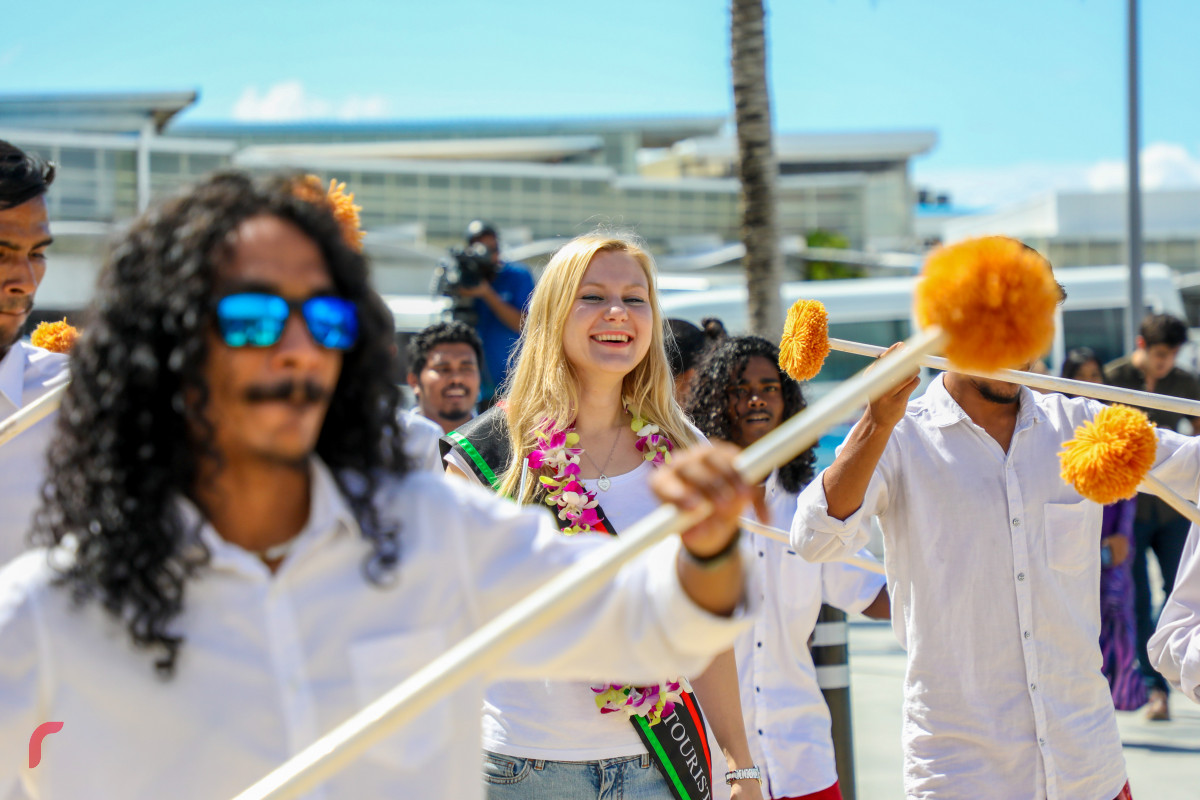During the third quarter of 2022, tourist arrivals rose by five percent in comparison to the same period last year totaling 377,409


Maldives welcoming tourist at Velana International Airport (VIA)
The recovery of the tourism sector of Maldives has been resilient during the third quarter of the concluding year, despite the challenges surfacing due to the Russia-Ukraine conflict.
This was announced by the Maldives Monetary Authority (MMA) in its quarterly economic bulletin for the third quarter of 2022, publicized on Thursday.
As such, the authority revealed that more than half of the target for tourist arrivals for the concluding year has been reached with the support of increased arrivals from the European source markets, mainly owing to the pent-up demand from traditional source markets as well as the Indian market.
During the third quarter of 2022, tourist arrivals rose by five percent compared to the same period last year, totaling 377,409.
However, MMA noted that total tourist arrivals remain three percent below pre-pandemic levels of the third quarter of 2019 and registered a decline when compared with the second quarter of this year, primarily reflecting a slowdown in tourist arrivals from neighboring India.
The authority went on to reveal that with the resuming of operations from Aeroflot6, the daily average arrivals from Russia increased to 678 arrivals per day during September 2022, from an average of 511 arrivals per day during June 2022.
During the quarter, the Russian market accounted for 16 percent of total market share, up from eight percent recorded in the second quarter of the year.
MMA stressed that arrivals from Russia continue to remain below the average observed before the war broke out, while arrivals from Ukraine also remained comparatively low.
Shedding light on tourist bed nights, a 13 percent annual growth was observed during the quarter, while the average stay dropped marginally to 8.2 days in the third quarter from around eight days.
Likewise, bed nights rose by 19 percent in comparison to pre-pandemic levels and in terms of market composition, Europe remained as the main source region, accounting for a sizeable 59 percent of tourist arrivals, while the market share of Asia dropped to 27 percent, owing to a decline in Indian arrivals after registering 31 percent during the second quarter of the concluding year.
Russia was the largest source market during the third quarter, accounting for 16 percent, followed by India making up 13 percent, UK making up nine percent, Germany making up seven percent and Italy contributing five percent.
With this being said, increases were observed for arrivals from Russia, UK and Italy, while arrivals from Germany observed growth as well.
Shedding light on the international flight movements data, MMA revealed that the flight movements increase by seven percent when compared to the same period last year, and by 10 percent compared to the same period of 2019.
This, MMA said mainly mirrors the increase in flight frequency by major carriers including Sri Lankan Airlines, Singapore Airlines, Emirates and Qatar Airways.
Bangkok Airways resumed operations to the Maldives after halting operations in 2020 due to the setbacks of the Covid-19 pandemic, during the quarter as well.
MMA highlighted that the number of operational resorts remained unaltered on average, at 164, when compared to the preceding quarter. However, the figure increased in comparison to the same period of 2021, with the operational bed capacity increasing by 16 percent in comparison to the same period of 2021 and three percent compared with the previous quarter.
The total operational bed capacity including resorts contributing 69 percent of beds and guesthouses making up 24 percent.
In the concluding year’s third quarter, the occupancy rate of the industry fell to 53 percent from 55 percent recorded last year.
In addition to this, the average occupancy rate of resorts rose to 65 percent which is an increase from 62 percent recorded during last year’s third quarter.